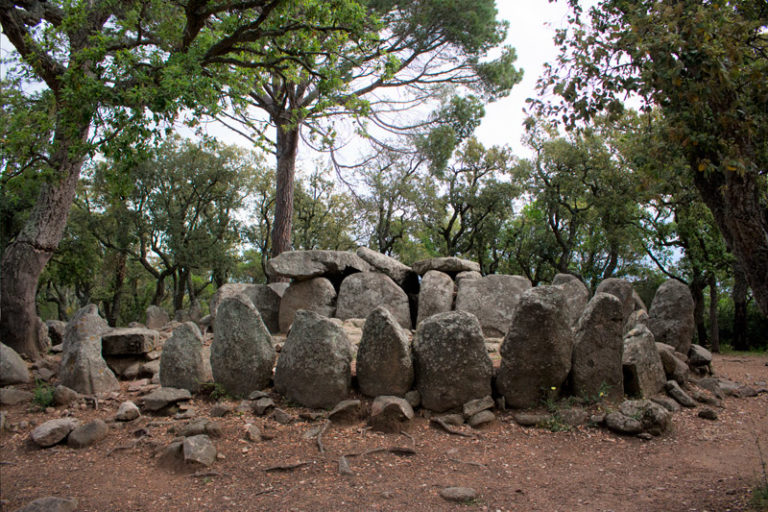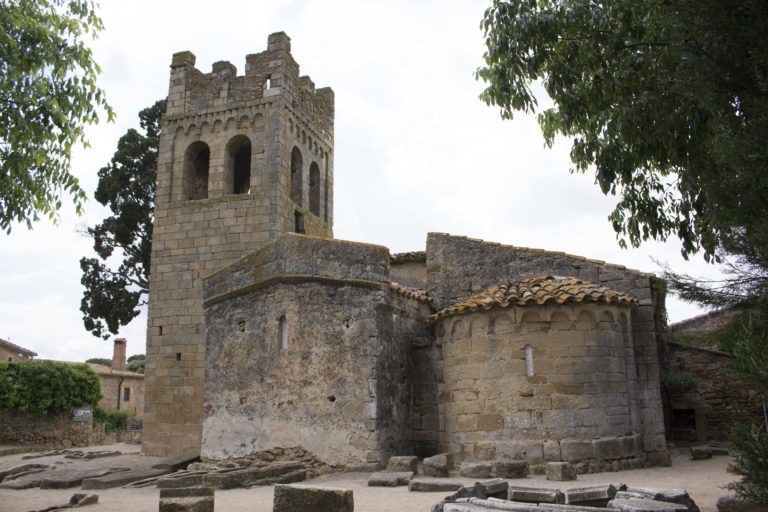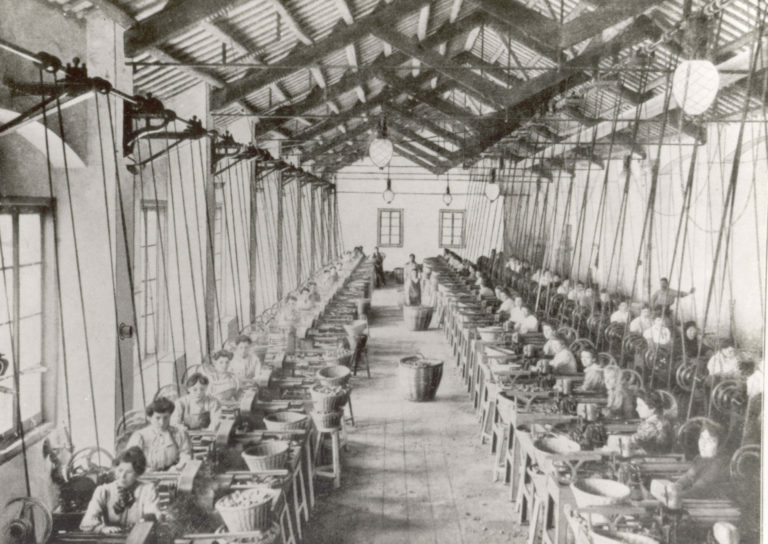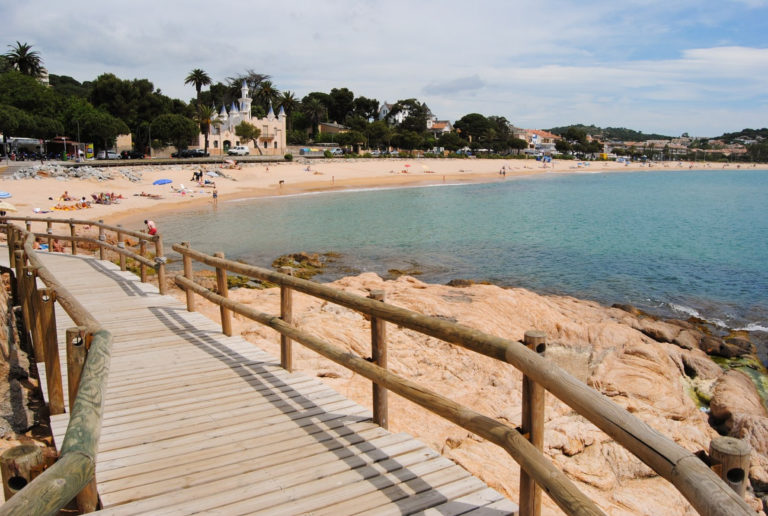Our history
For millennia the Baix Empordà has been a crossroads and an ideal location for agriculture, fishing, crafts and certain types of industry to flourish. Each era has made its mark on a region which is a real mixture of legacies and cultures.
-

The first inhabitants
Sheltering in the foothills of the Montgrí mountains and the forests of the Gavarres, where various remains have been found, the first inhabitants of the Baix Empordà date back to the Palaeolithic. The transition from hunting and gathering to agriculture and livestock led to the start of settlement of the region’s plains and the construction of megalithic monuments. Many of these megaliths are concentrated in the Gavarres, especially in municipalities like Santa Cristina d’Aro, Calonge and Forallac. Among them, the Dolmen de la Cova d’en Daina in Romanyà de la Selva (Santa Cristina d’Aro) stands out for its size.
Later on, the Iberians settled in various places in the region, of which the settlement of Puig de Sant Andreu d’Ullastret, the largest in Catalonia, is a good example. Other notable settlements include Castell (Palamós) or the site of Sant Sebastià de la Guarda (Palafrugell). The presence of the Iberians, or indigets, was gradually eclipsed by the spread of the Romans, during which time towns and settlements dedicated to working the fields were built. This first network of centres of population was the basis of the medieval expansion, after the brief passage of the Visigoths and the Moors.
-

A lasting architecture
Castles, fortified houses and churches are the backbone around which the many towns and villages dotted around the Baix Empordà plain were built in the Middle Ages. This is the origin of the region’s current appearance with a balanced distribution of the population and agricultural activity safeguarding the scenic patchwork. The stone walls built during this period are still the solid skeleton of many towns in the region. Similarly, in the woods and the slopes of the paths there are churches, wells and other architectural elements. The presence of monasteries and convents should not be forgotten. These had a strong influence on the region during the medieval era, such as the monastery of Sant Feliu de Guíxols or the monastery of Sant Miquel in Cruïlles, which are examples of this architecture dating back almost a thousand years. These and other buildings complement a wide variety of smaller religious and civil structures, in which the Romanesque style predominates, that can be found in many of these towns and villages of medieval origin.
From the Middle Ages until the 18th century, constant attacks by pirates and corsairs forced the population to withdraw from the coast. The fortified farmhouses in the Torroella de Montgrí, Palafrugell and Palamós areas is evidence of this, while the towers, camí de ronda coastal paths and other fortified elements near the coast were built to monitor the sea. Notable examples include the Torre de Sant Sebastià (Palafrugell) or the Torre Valentina (Calonge i Sant Antoni).
-

Photo: Making corks with scraping machines at Miquel, Vincke & Meyer in Palafrugell. 1907. Image Archive of the Cork Museum. Manich Collection.
Industrial heritage
After the disruptions of the early modern period, such as banditry, environmental and agricultural crises and the Reapers’ War (1640–1659) and the War of the Spanish Succession (1701–1714), the region’s economy recovered thanks to technical improvements in farming and the start of industrialisation, centred around cork, a product that distinguishes the region and has given it a great dynamism. In addition, the work of potters, which had a long artisan tradition, started to be mechanised. These processes favoured population growth, especially in the larger towns. Palafrugell, Sant Feliu de Guíxols and Palamós were the leading locations in the cork industry, while La Bisbal d’Empordà, led in pottery. This has left a legacy that is still visible in these municipalities and which you can visit thanks to a variety of cultural facilities and activities.
Despite everything, a new setback – phylloxera – brought back economic stagnation. The chance for a more prosperous future lay in the Americas. Thanks to the fortunes they made in the Americas, emigrants from the Baix Empordà, or indianos, built colonial-style houses and mansions, as well as contributing to the improvement of other buildings and popularising the habanera, a type of song with deep roots in the region. Begur conserves a lot of heritage from these indianos and every year relives this era with the Indianos Festival. For their part, Calella de Palafrugell, Palamós, Calonge, Sant Feliu de Guíxols and in general all of the coastal locations contribute to the dissemination of the habaneras and other songs linked to the sea.
-

Photo: Pere Carreres. Arxiu d'imatges PTCBG
The Baix Empordà today
Since the 1950s, the Baix Empordà has undergone significant growth in the tourism sector, which had a precedent in the summer holidays of the Catalan bourgeois at the start of the century. Attracted by an almost untouched wild rural landscape and by the peace and quiet of the area, thousands of visitors started to come from everywhere, including Hollywood stars who made films here and fell in love with the coast of the Baix Empordà and the Costa Brava. Tourism is now one of the economic motors of the region and is increasingly pursuing a model of quality tourism that is sustainable and respectful to the region’s natural environment and heritage. It is worth noting that the Baix Empordà, primarily a region of services, conserves its own character and identity, making it a tranquil, welcoming, inclusive and very inspiring region.





